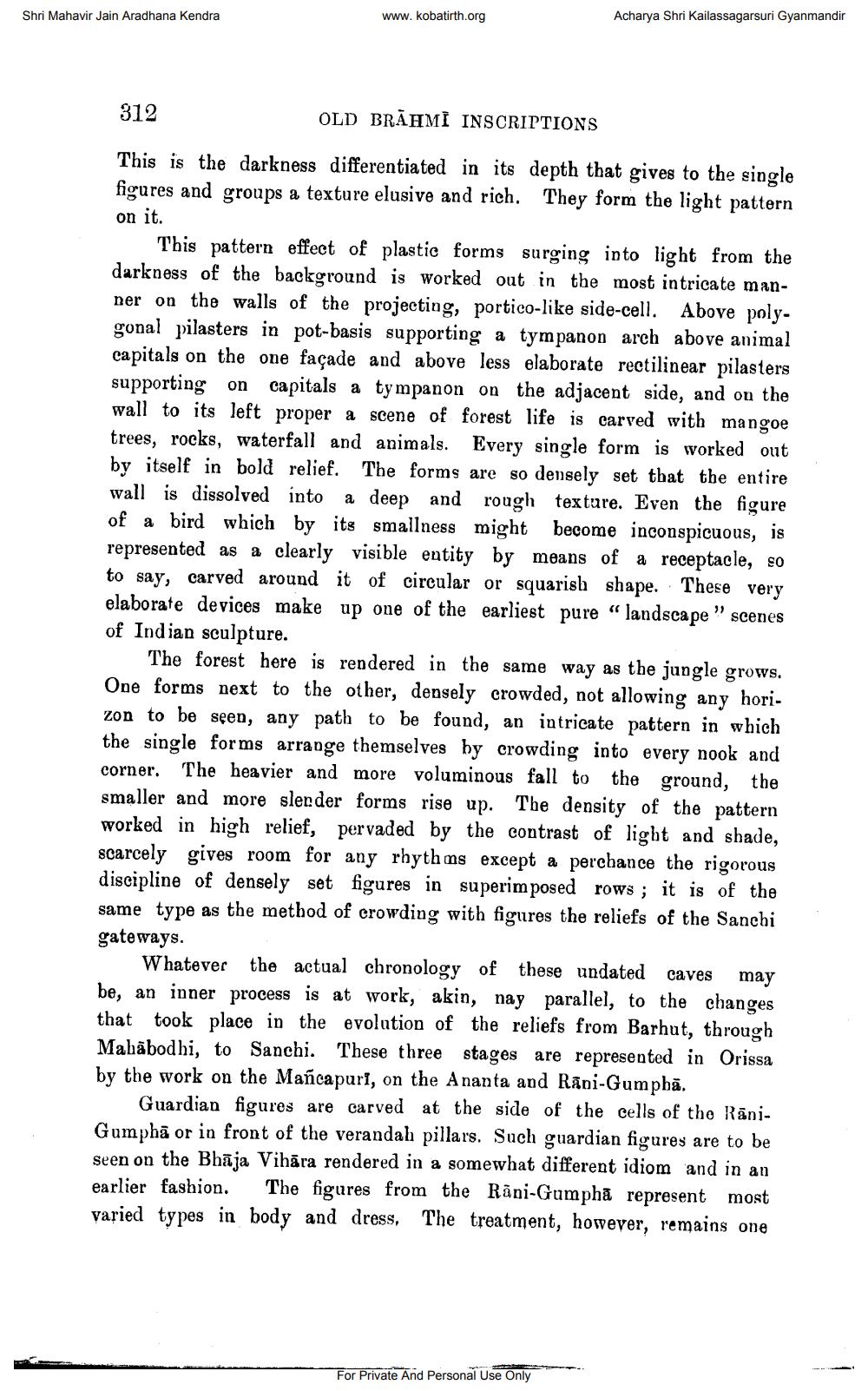________________
Shri Mahavir Jain Aradhana Kendra
Acharya Shri Kailassagarsuri Gyanmandir
www.kobatirth.org
312
OLD BRĀHMI INSCRIPTIONS
This is the darkness differentiated in its depth that gives to the single figures and groups a texture elusive and rich. They form the light pattern on it.
This pattern effect of plastic forms surging into light from the darkness of the background is worked out in the most intricate manner on the walls of the projecting, portico-like side-cell. Above polygonal pilasters in pot-basis supporting a tympanon arch above animal capitals on the one façade and above less elaborate rectilinear pilasters supporting on capitals a tympanon on the adjacent side, and on the wall to its left proper a scene of forest life is carved with mangoe trees, rocks, waterfall and animals. Every single form is worked out by itself in bold relief. The forms are so densely set that the entire wall is dissolved into a deep and rough texture. Even the figure of a bird which by its smallness might become inconspicuous, is represented as a clearly visible entity by means of a receptacle, co to say, carved around it of circular or squarish shape. These very elaborate devices make up one of the earliest pure "landscape" scenes of Indian sculpture.
The forest here is rendered in the same way as the jungle grows. One forms next to the other, densely crowded, not allowing any hori. zon to be seen, any path to be found, an intricate pattern in which the single forms arrange themselves by crowding into every nook and corner. The heavier and more voluminous fall to the ground, the smaller and more slender forms rise up. The density of the pattern worked in high relief, pervaded by the contrast of light and shade, scarcely gives room for any rhythms except a perchance the rigorous discipline of densely set figures in superimposed rows; it is of the same type as the method of crowding with figures the reliefs of the Sanchi gateways.
Whatever the actual chronology of these undated caves may be, an inner process is at work, akin, nay parallel, to the changes that took place in the evolution of the reliefs from Barhut, through Mahābodhi, to Sanchi. These three stages are represented in Orissa by the work on the Mañcapuri, on the Ananta and Rāni-Gumphā.
Guardian figures are carved at the side of the cells of the Rāni. Gumphā or in front of the verandah pillars. Such guardian figures are to be seen on the Bhāja Vihāra rendered in a somewhat different idiom and in an earlier fashion. The figures from the Râni-Gumpha represent most varied types in body and dress, The treatment, however, remains one
For Private And Personal Use Only




